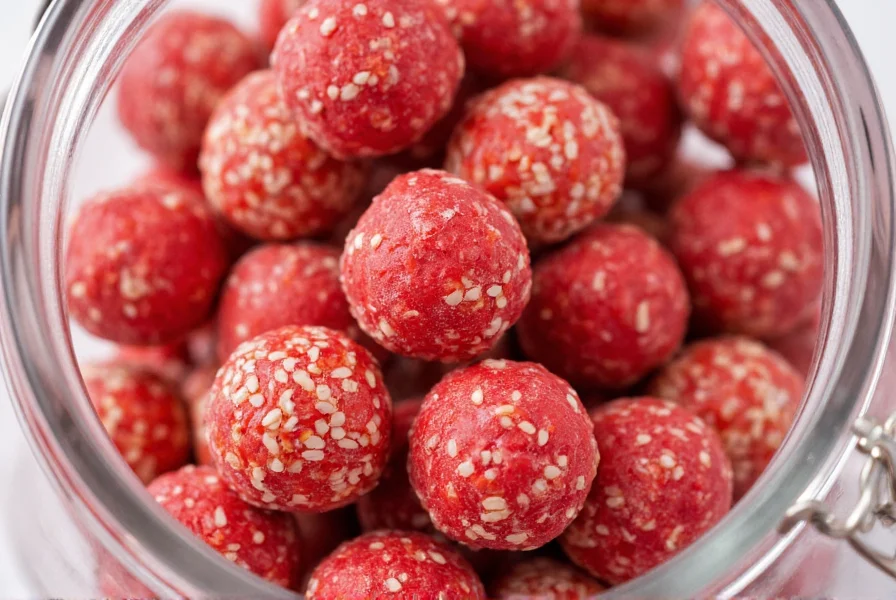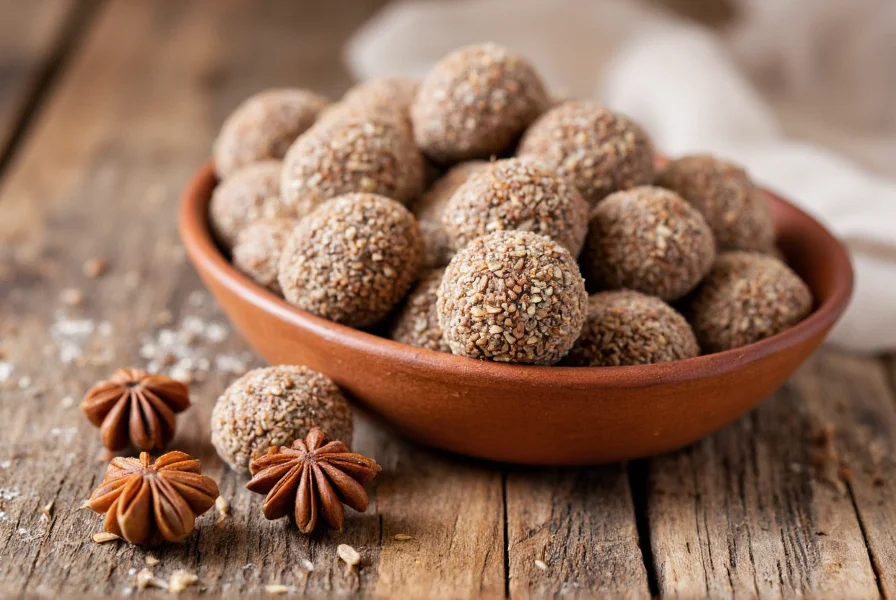Aniseed balls represent one of the oldest forms of flavored confectionery, with roots tracing back to ancient medicinal practices. These small, intensely flavored candies deliver a powerful anise taste that has captivated palates for generations. Unlike many modern candies, traditional aniseed balls maintain a simple ingredient profile that highlights the natural properties of aniseed.

Historical Origins of Aniseed Confections
The history of aniseed balls stretches back to ancient civilizations that recognized the medicinal properties of anise. Ancient Egyptians, Greeks, and Romans used anise seeds for digestive aid and breath freshening. By the Middle Ages, European apothecaries commonly prepared anise-based remedies in pill or lozenge form. The transformation from medicinal preparation to popular confection occurred during the 18th and 19th centuries when sugar became more widely available.
Traditional aniseed balls recipe development paralleled advances in candy-making technology. Early versions were hand-rolled by confectioners, explaining their characteristic spherical shape. The distinctive red and white varieties that dominate today's market emerged in the late Victorian era when food coloring became commercially viable for candy production.
Ingredients and Manufacturing Process
Authentic aniseed balls ingredients remain remarkably simple compared to many contemporary candies. The core components include:
| Primary Ingredient | Function | Traditional Percentage |
|---|---|---|
| Sugar | Sweetener and structure | 65-70% |
| Glucose syrup | Prevents crystallization | 20-25% |
| Aniseed oil | Flavoring agent | 1-2% |
| Food coloring | Visual differentiation | Minimal |
The manufacturing process for how aniseed balls are made has evolved from artisanal methods to modern production while maintaining essential characteristics. Traditional methods involved heating sugar and glucose to the 'hard ball' stage (approximately 120-130°C), adding aniseed oil, then hand-rolling the mixture into small spheres before cooling. Contemporary production uses specialized candy-making equipment that extrudes and cuts the mixture into uniform pieces, though premium brands still employ slower, more traditional techniques that enhance flavor development.
Cultural Significance Across Regions
Aniseed balls cultural significance varies considerably across different regions. In the United Kingdom, they've been a staple of traditional sweet shops since the 19th century, often sold by weight from glass jars. Australian and New Zealand versions typically feature more intense flavoring and brighter coloring. Mediterranean cultures incorporate similar anise-flavored confections into religious celebrations and family gatherings.
The distinction between aniseed balls vs anise drops primarily relates to texture and composition. Aniseed balls maintain a chewy, slightly hard center when fresh, while anise drops tend to be softer and more jelly-like. This difference stems from variations in sugar concentration and cooking temperature during production.
Flavor Profile and Consumption Patterns
The flavor experience of aniseed balls unfolds in distinct stages. Initial contact delivers intense sweetness, followed by the characteristic anise flavor that lingers significantly longer than in many other candies. The chewy texture allows for extended flavor release, making them particularly satisfying for those who appreciate complex taste experiences.
Where to buy aniseed balls has expanded considerably in recent years. While traditionally found in British sweet shops and specialty confectionery stores, they're now available through online retailers, international food sections of major supermarkets, and even some mainstream candy aisles. Artisan producers have revived interest in small-batch, naturally colored varieties that appeal to consumers seeking less processed options.
Modern Interpretations and Variations
Contemporary confectioners have developed numerous variations on the traditional aniseed balls recipe. Some incorporate natural coloring from plant sources, while others experiment with complementary flavors like mint or citrus to balance the intense anise taste. Sugar-free versions using alternative sweeteners have emerged to accommodate dietary preferences.
Despite these innovations, purists maintain that authentic aniseed balls should contain only the essential ingredients without artificial additives. This preference for simplicity has contributed to renewed interest in traditional confectionery methods among artisan candy makers.
Frequently Asked Questions
What are aniseed balls made of?
Traditional aniseed balls consist primarily of sugar, glucose syrup, and aniseed oil. Some varieties include minimal food coloring (typically red or white) but contain no artificial flavors or preservatives in authentic recipes. The simple ingredient profile distinguishes them from many modern candies that incorporate additional additives.
Do aniseed balls have any health benefits?
While primarily consumed as a treat, aniseed has traditionally been used for digestive support. The anise oil in these candies may provide mild relief for indigestion or bloating, though the sugar content means they shouldn't be considered a health product. Modern versions sometimes incorporate natural ingredients for those seeking less processed options.
Why are some aniseed balls red and others white?
The color variation serves primarily as a visual differentiator rather than indicating flavor differences. Traditional red aniseed balls use natural coloring from sources like beetroot or cochineal, while white varieties contain no added color. Some manufacturers create distinct flavor profiles for each color, but authentic versions maintain the same anise flavor regardless of color.
How should aniseed balls be stored to maintain freshness?
Store aniseed balls in an airtight container at room temperature away from direct sunlight. Properly stored, they maintain their chewy texture for 6-12 months. Exposure to moisture causes them to become sticky, while excessive heat may cause them to lose their shape. Traditional varieties without preservatives have a shorter shelf life than modern formulations.
Are aniseed balls suitable for vegetarians and vegans?
Most traditional aniseed balls are vegan-friendly as they contain only plant-based ingredients. However, some modern varieties may include gelatin or beeswax, so checking ingredient labels is recommended. Authentic recipes using only sugar, glucose, and anise oil are naturally suitable for both vegetarians and vegans.











 浙公网安备
33010002000092号
浙公网安备
33010002000092号 浙B2-20120091-4
浙B2-20120091-4